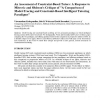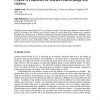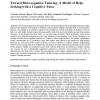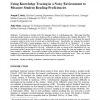AIEDU
2006
14 years 15 days ago
2006
This paper presents FearNot, a virtual learning environment populated by synthetic characters interacting in bullying scenarios, aimed at 8-12 year old children. FearNot was design...
AIEDU
2006
14 years 15 days ago
2006
Tutoring systems are described as having two loops. The outer loop executes once for each task, where a task usually consists of solving a complex, multi-step problem. The inner lo...
AIEDU
2006
14 years 15 days ago
2006
Model tracing and constraint-based modeling are two prominent paradigms on which intelligent tutoring systems (ITSs) have been based. We Kodaganallur, Weitz and Rosenthal (2005), h...
AIEDU
2006
14 years 15 days ago
2006
Learner-centred design (LCD) is a nebulous concept. It can range from attempts to design with the needs of the learner at the forefront, to involving the learner at various stages ...
AIEDU
2006
14 years 15 days ago
2006
AIEDU
2006
14 years 15 days ago
2006
Involving stakeholders at an early stage of learning environment design enables researchers to base a system around the needs of learners. By working directly with learners, resear...
AIEDU
2006
14 years 15 days ago
2006
Constraint-based modeling has been used in many application areas of Intelligent Tutoring Systems as a powerful means to analyse erroneous student solutions and generate helpful fe...
AIEDU
2006
14 years 15 days ago
2006
Constructing a student model for language tutors is a challenging task. This paper describes using knowledge tracing to construct a student model of reading proficiency and validat...
AIEDU
2006
14 years 15 days ago
2006
In this article, we discuss the motivation for a novel style of tutorial dialogue system that emphasizes reflection in a simulation based exploratory learning environment called Cy...




